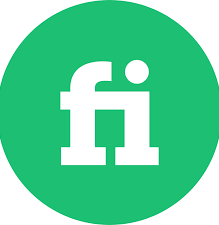How do you ensure transparency in pricing and cost breakdowns when sourcing from China?
Sourcing Specialist Allen Zeng
9/24/20254 min read


Ensuring transparency in pricing when sourcing from China is crucial to avoiding surprises and building trust with your suppliers. Over the years, I've learned that clear, detailed cost breakdowns are the foundation of a reliable and successful procurement process. Let’s dive into how you can keep pricing transparent and predictable.
To maintain transparency, always ensure clear communication, demand detailed cost breakdowns, and continuously monitor the cost structure. Transparency starts from the first negotiation and should be maintained throughout the entire sourcing process.
Now, let’s explore the best practices that I follow to ensure there are no hidden costs or surprises.
How do you provide a clear breakdown of all costs involved?
Providing a detailed and transparent cost breakdown is the first step in ensuring fair pricing when sourcing from China. Without it, you risk hidden fees or unclear expectations. Here’s how I make sure all costs are clear and accounted for.
Requesting Component-Level Quotes
One of the first things I do is insist on a component-level quote rather than just a lump sum unit price. This ensures that I understand exactly what goes into the pricing, from raw materials and labor to packaging, shipping, and any other hidden fees. For example, when sourcing electronics, I ask for a breakdown of each individual component cost, such as labor, assembly, and packaging.
Detailed Cost Breakdown Request
Whenever possible, I always ask suppliers to provide a clear breakdown of all costs involved. This includes raw materials, labor, tooling, packaging, shipping fees, tariffs, and any other charges. Having these costs broken down helps me understand what drives the price and allows me to identify any areas where savings could be made.
Supplier Due Diligence
Before I start working with a supplier, I conduct extensive due diligence. This includes factory audits, verifying business registration, and checking the supplier’s certifications. Knowing the supplier’s capabilities and reputation reduces the chances of hidden fees or quality issues down the line.
Using Verified and Vetted Suppliers
By working with verified suppliers or reputable sourcing brokers, I can ensure that I get upfront pricing with no surprises. These brokers often provide certified factories that offer transparent pricing, ensuring I don’t have to worry about unexpected costs.
What tools do you use to ensure there are no hidden fees?
To prevent hidden fees, I rely on several tools and strategies to ensure I have full visibility into the cost structure. These tools help identify potential risks and keep the sourcing process smooth.
Incoterms Transparency
One key tool I use is to ensure both parties clearly understand the agreed Incoterms (e.g., EXW, FOB, CIF, DDP). It’s crucial to define what costs are covered under each term to avoid miscommunication. I make sure the supplier and I agree on which costs are included in the price upfront, including shipping, customs, and delivery charges.
Requesting Supplier Invoices
If I’m working with a sourcing agent, I always ask for original supplier invoices to verify material and component costs. This allows me to ensure there’s no markup or hidden fees being added.
Monitoring Hidden Costs
Some costs can fly under the radar if you’re not paying attention. I keep an eye on hidden fees such as quality control, customs duties, logistics, and documentation fees. By proactively considering these costs in my budget, I can avoid unexpected price increases.
Using Third-Party Verification Tools
Third-party verification tools, like those offered by quality inspection services, help me identify any hidden fees or pricing inconsistencies before I finalize agreements. These tools also assist in verifying the legitimacy of the supplier and the accuracy of the pricing.
Can you help us negotiate pricing to keep our costs predictable?
Negotiating fair pricing is crucial to ensure that costs remain predictable throughout the sourcing process. In my experience, having a clear negotiation strategy not only lowers the costs but also reduces the risk of price fluctuations.
Open-Book Cost Model
One approach that’s worked well for me is the “open-book” cost model. This means that the supplier shares detailed cost data with me, including material quotes, labor hours, and overhead. With this information, both parties can agree on fair pricing while keeping margins reasonable and predictable.
Establishing Long-Term Relationships
Building a long-term relationship with suppliers is one of the best ways to ensure stable pricing. Suppliers who trust you are more likely to offer discounts or lock in prices for extended periods. By maintaining consistent business with the same suppliers, I can negotiate more favorable terms and reduce price variability.
Utilizing Benchmarking Data
When negotiating, I often use third-party benchmarking data, such as local labor rates or material prices in China, to ensure the pricing I’m being offered is competitive. Having external data as a reference point allows me to make more informed decisions and avoid inflated pricing.
Clear Contracts with Price Adjustments
I always negotiate clear contracts that include clauses for price revisions and penalties for undisclosed costs. This helps ensure that any changes in pricing are transparent and agreed upon by both parties.
How do you manage fluctuations in pricing during long-term projects?
Price fluctuations can be a major issue, especially in long-term sourcing projects. Managing these fluctuations requires careful planning and negotiation.
Locking Prices in Long-Term Contracts
One way I manage price fluctuations is by locking in prices through long-term contracts. This means negotiating fixed prices for a set period to avoid unexpected price increases. While this may not always be possible with certain products or materials, it provides some stability for both parties.
Adjusting for Inflation and Currency Fluctuations
When negotiating long-term deals, I also consider inflation and currency fluctuations. For example, I might include a clause that allows for price adjustments based on significant changes in the cost of raw materials or currency exchange rates. This ensures that both the supplier and I are protected from unexpected market shifts.
Building Flexibility into Contracts
While locking in prices is important, I also build flexibility into contracts. This includes having regular reviews to assess whether pricing needs to be adjusted based on external factors. This way, I can stay proactive and manage any cost increases before they become a bigger problem.
Conclusion
Ensuring transparency in pricing when sourcing from China requires a proactive approach, clear communication, and diligent monitoring. By implementing these strategies, you can avoid hidden fees, manage fluctuations, and maintain predictable costs throughout your sourcing journey.
Connect Us
Great partnerships start with a simple hello.
Quick chat
Explore
© 2025. All rights reserved.












